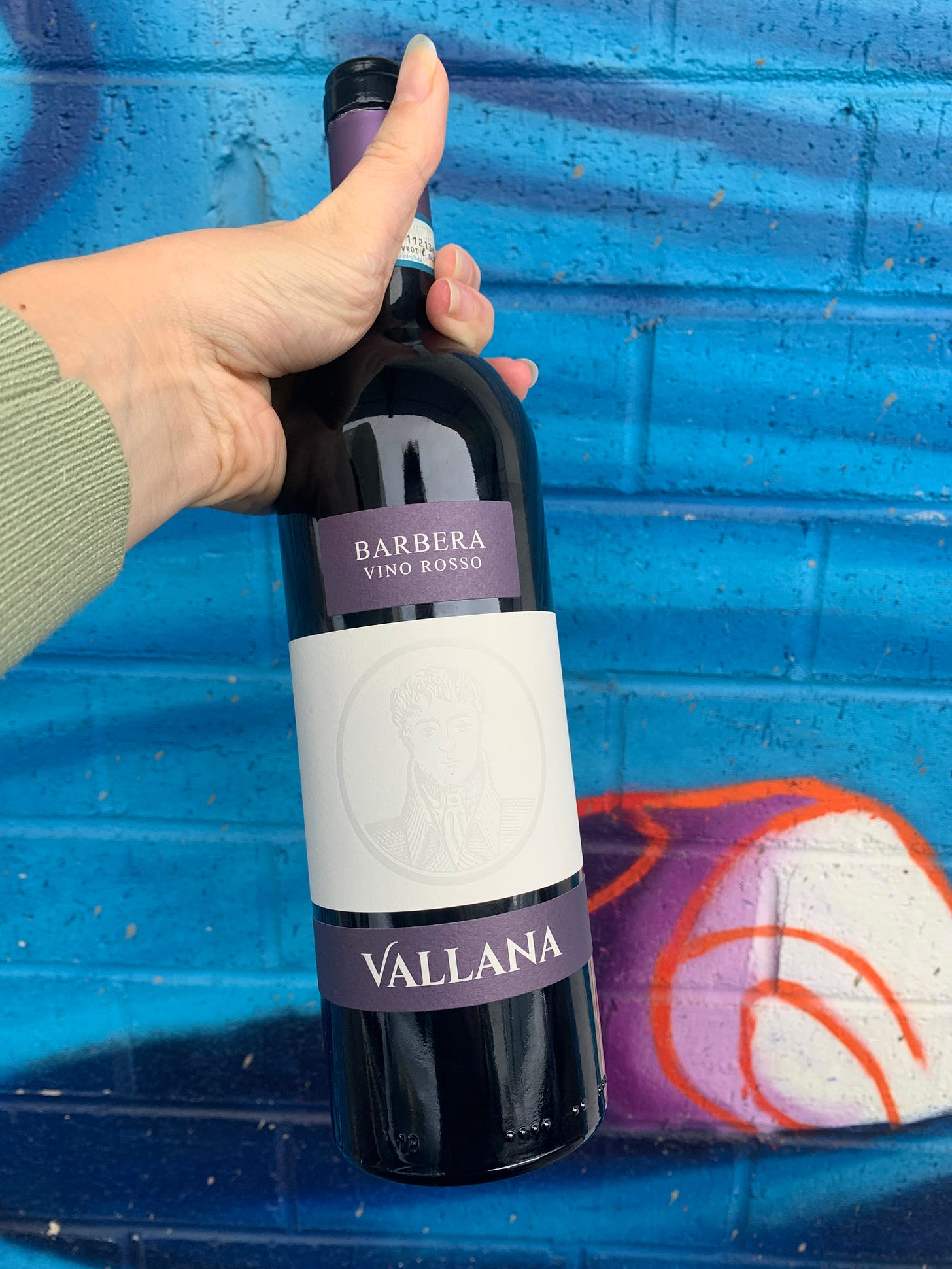No Stone Left Unturned
A look into how wine people are currently explaining minerality, then I implore you to buy more Barbera.
Wine Corrections: Minerality Pt.1
Exploring myths, misconceptions, and debatable truths about wine.
Oof, minerality. I’m hesitant to approach this topic—this newsletter approaches wine as a student, not a master, so I could really mess this up. Some people call complete bullshit on terroir because there isn’t enough scientific evidence to back up the claims that so many winemakers (and beyond) make.
But, a little humble pie is warranted here. When it comes to minerality (and all elusive topics of our world) the lack of scientific data isn’t grounds for dismissing it. It’s simply grounds for saying—there’s a lot of anecdotal evidence, and technology (or in some cases, funding) hasn’t caught up with our desire to draw a conclusion.
So we wait. Minerality, you’re totally worth it.
A quick introduction to what I mean by minerality. It’s the aroma/taste that reminds you of chalk, wet stones, gravel, asphalt, salt, seashell, etc. It’s the aroma of minerals. It’s a fairly new term on the scene, about 30 years old, and it’s a hot topic. Why? Because it eludes us. And that just makes us love it more.
There’s one thing we do know about minerality and it’s very important. Even though the roots of the grapevine are interacting with minerals in the soil, they don’t take up the minerals themselves and release them into the wine. This was disproved by a geologist, professor, and winemaker named Alex Maltman.
So if there aren’t minerals in the wine itself, then where are these aromas coming from?
One likely answer is the presence of reductive sulphur compounds, a can of worms in its own right. When wine is made with minimal oxygen contact, some really delicious aromas can occur, but if taken too far, a reductive wine smells like an old fart.
You can’t miss it.
There are other theories: the presence of potassium could lead to salty flavors. Our brains could simply be confusing acidity with minerality, it could be the salinity of the wine, the wine could leach compounds from amphorae or concrete, it could be lees contact, a lack of fruit—there are many ideas and a lot of research to do. And I think wine scientists will leave no stone unturned (pun intended).
Does a wine smell like chalk because of the chalky soils the grapes grew on? We don’t really know. What we do know is that some aromas, like nuts or clove, can occur for a number of reasons. Perhaps minerality is like that.
Personally, I love a wine that smells like minerals. Give me a salty wine that smells like seashells and lemon, please. I shall close my eyes and imagine I’m at the beach.
So if you’re new to minerality, give your wine a whiff and see if you can catch it. It’s easier to detect in white wine, and you’re going to want to shop locally for that. Minerality makes its presence known in quality-minded, intentional winemaking. That I can say for sure.
I want to acknowledge a major source for this mystery hour: The Science of Wine by Jamie Goode. What an excellent book.
Book me for a private wine tasting!
Real quick—if you’re in Charlotte and you want to add some Wine-Is-Confusing-razzle-dazzle to your holiday season, I’m offering private wine tastings for small and large parties!
I’m also offering a personal wine shopper service. I will source wine to pair with your holiday parties (or just for you) from local wine shops and deliver them to your door with pairing suggestions and descriptors.
And if you’re not in Charlotte, I offer consultations! If you’re throwing a party and you’re lost on the wine part, let me help.
Email me at wineisconfusing@gmail.com for a quote.
Affordable Pick o’ The Month: Barbera
My gem of the month was this Barbera from Piedmont Wine Imports. Barbera is a versatile red grape from northern Italy. In the wine world, “versatile” means two things. First, it means that it can be made in many different styles and expressions. Exciting. Second, one of those styles is really boring and this has kind of ruined its reputation with the masses.
This happens. But this one right here? This is my favorite Barbera I’ve had to date. Let me tell you why.
Barbera’s superpower is its ability to retain acidity even in warm climates—this means that we’ll be drinking this wine as the dumpster fire progresses (yay). Often, these wines are simple and straightforward with red fruit, black pepper, and medium weight. Nothing wrong with that. If you’re cracking something open on spaghetti night on Wednesday, she’s not a bad choice.
As far as Italian wines go, you can count on Barbera to be affordable. But sometimes (if you find the right wine buyer or the right importer) you’ll catch a glimpse of another side of Barbera, one that is savory, umami, structured, and ageable.
I tasted this one with an old friend, Jerry, and a new friend, Ellie. We gave it a little decanting and sipped as we discussed reality TV and having 15 minutes of fame which led us to research the etymology of the word paparazzi.
Did you know that the singular is paparazzo? The word comes from the name of a news photographer in the 1960 film La Dolce Vita. He’s named after the Italian slang for “mosquito.”
Buzz buzz, baby.
Here are my official notes.
Nose: cigar box, cocoa powder, cherry, fig, umami, wet soil
Palate: sour cherry, peppery finish
Details: dry, high acidity, low tannin, medium body
Who should drink it: anyone trying to make themselves love Old World wine, Pinot Noir lovers
Pair it with: sharing about loss, frustration derived from men, reality TV marathons, pizza, etymology
Song pairing: Santa Lucia (Jerry’s pick), Tiger Lily (Ellie’s pick) Angel In Disguise (Kara’s pick)





